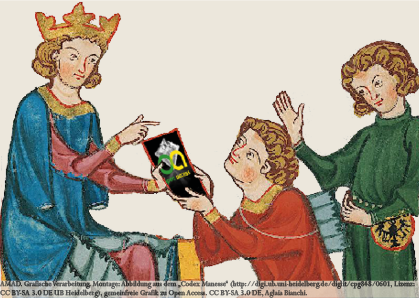AMAD
„Archivum Medii Aevi Digitale - Interdisziplinäres Open-Access-Fachrepositorium und Wissenschaftsblog für Mittelalterforschung‟Zur Einreichung

Langanzeige der Metadaten
| DC Element | Wert | Sprache |
|---|---|---|
| Mitwirkende | The Pennsylvania State University CiteSeerX Archives | - |
| Autor*in | Paul Magdalino | - |
| Autor*in | Dumbarton Oaks | - |
| Autor*in | Dumbarton Oaks Studies | - |
| Autor*in | Constantine Pitsakis | - |
| Autor*in | Nicolas Oikonomides | - |
| Autor*in | Angeliki E. Laiou | - |
| Autor*in | Cécile Morrisson | - |
| Autor*in | Charalambos Bouras | - |
| Quelle | http://citeseerx.ist.psu.edu/viewdoc/summary?doi=10.1.1.685.4259 | - |
| Quelle | http://www.doaks.org/resources/publications/doaks-online-publications/economic-history-of-byzantium/ehb20-cp/ | - |
| URI | https://www.amad.org/jspui/handle/123456789/71262 | - |
| Beschreibung | In 600 Constantinople was a city of three hundred thousand to five hundred thousand people.1 Its built environment represented three cumulative phases of development from the foundation in 324–330. The first phase was the massive enlargement and upgrading, under Constantine I and his fourth-century successors, of the ancient city of Byzantion through the addition of traditional units of ancient urban planning: a new perimeter wall; a vast civic and administrative complex including the Hippo-drome, the imperial Great Palace, and the urban prefecture; passing through and be-yond this, an extensive network of fora, colonnades, and sculptured monuments laid out along and across the branching artery formed by the central avenue (Mese) that was the convergence and termination of the access roads from the west; public baths; an elaborate infrastructure of ports, granaries, an aqueduct, and fountains for the adduction and distribution of food and water; and the indispensable complement to all this public building, the grand residences and humble tenements of the various classes of immigrants who flocked to the new center of power. The churches that repre-sented the triumph of the new state religion were, of course, new elements, but initially | - |
| Sprache | eng | - |
| Rechte | Metadata may be used without restrictions as long as the oai identifier remains attached to it. | - |
| Dewey-Dezimalklassifikation | 940 | - |
| Titel | Medieval Constantinople: Built Environment and Urban Development | - |
| Typ | text | - |
| AMAD ID | 568433 | - |
| Open Access | 1 | - |
| Enthalten in den Sammlungen: | BASE (Bielefeld Academic Search Engine) General history of Europe | |
Dateien zu dieser Ressource:
Es gibt keine Dateien zu dieser Ressource.
Alle Ressourcen in diesem Repository sind urheberrechtlich geschützt, soweit nicht anderweitig angezeigt.

